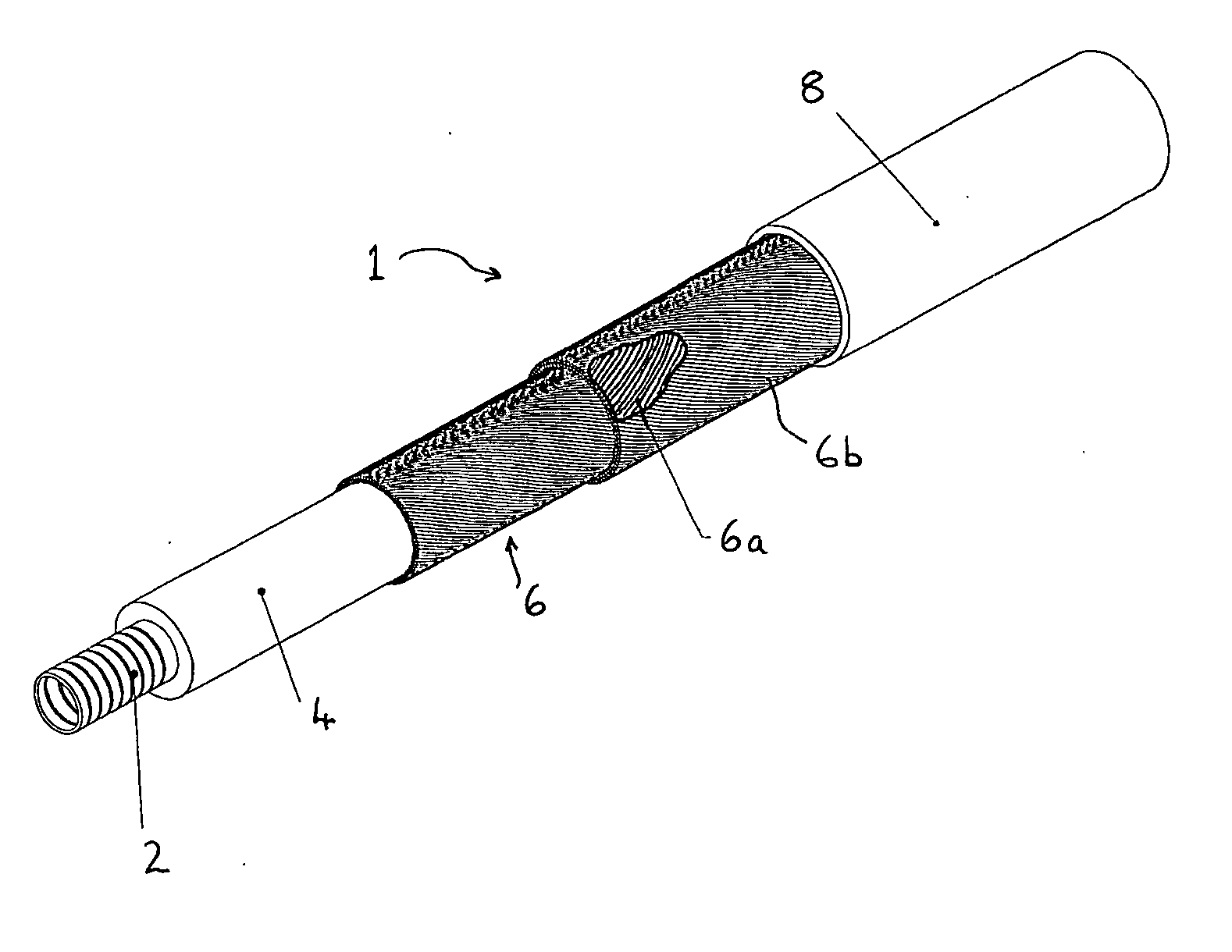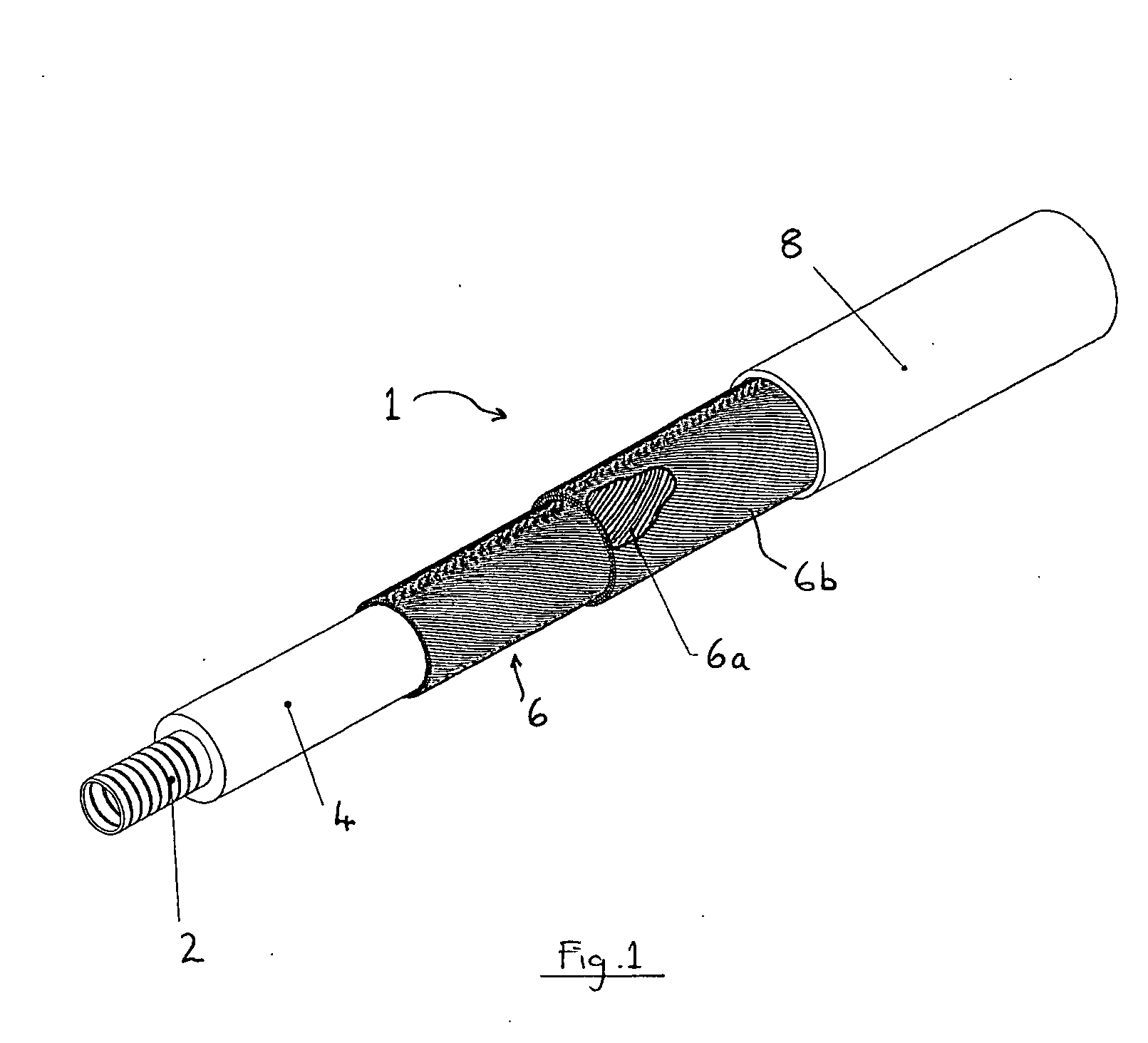Fluid conduit
- Summary
- Abstract
- Description
- Claims
- Application Information
AI Technical Summary
Benefits of technology
Problems solved by technology
Method used
Image
Examples
Embodiment Construction
[0033]FIG. 1 shows a fluid conduit, generally indicated by reference number 1, for the transportation of working fluids, such as hydraulic fluids, to a wellhead or the like from a topside location or the like. Typically the fluid conduit would comprise one of a plurality of similar conduits arranged in a multi-conduit umbilical (not shown).
[0034] The conduit comprises an inner flexible collapse resistant hose 2 surrounded by an extruded hose liner 4 and two layers 6 of a pair of helically contra-wound high tensile steel wires 6a, 6b. Each turn of the steel wires 6a, 6b is tightly wound against, and is bonded in substantially close contact, with adjacent turns.
[0035] In more detail the inner flexible collapse resistant hose 2 comprises a metallic interlock wound carcass having an inside diameter in the range of from {fraction (3 / 16)} in (4.76 mm) to ¾ in (19.05 mm).
[0036] The hose liner 4 is an extruded layer of fluoro-polymer approximately 1 mm thickness.
[0037] As shown in FIG. ...
PUM
 Login to View More
Login to View More Abstract
Description
Claims
Application Information
 Login to View More
Login to View More - R&D
- Intellectual Property
- Life Sciences
- Materials
- Tech Scout
- Unparalleled Data Quality
- Higher Quality Content
- 60% Fewer Hallucinations
Browse by: Latest US Patents, China's latest patents, Technical Efficacy Thesaurus, Application Domain, Technology Topic, Popular Technical Reports.
© 2025 PatSnap. All rights reserved.Legal|Privacy policy|Modern Slavery Act Transparency Statement|Sitemap|About US| Contact US: help@patsnap.com


